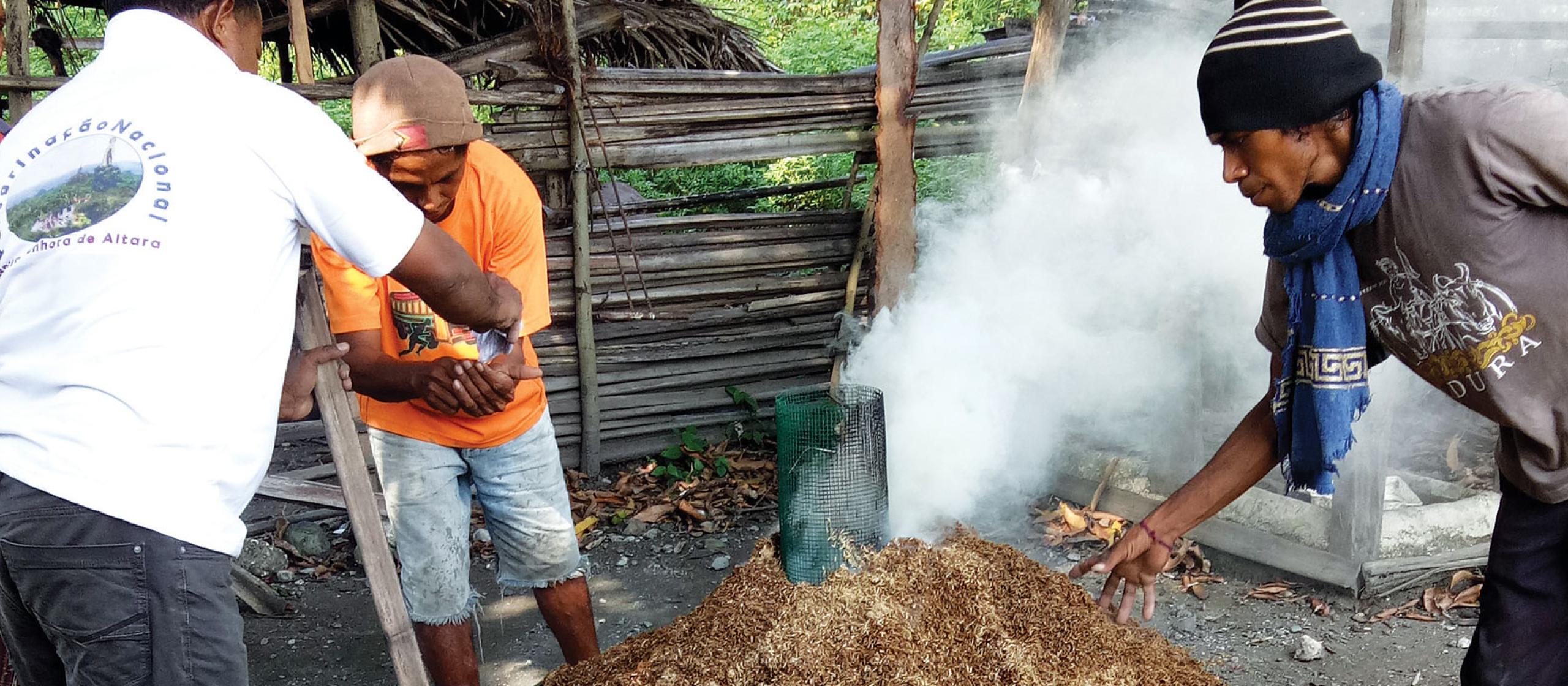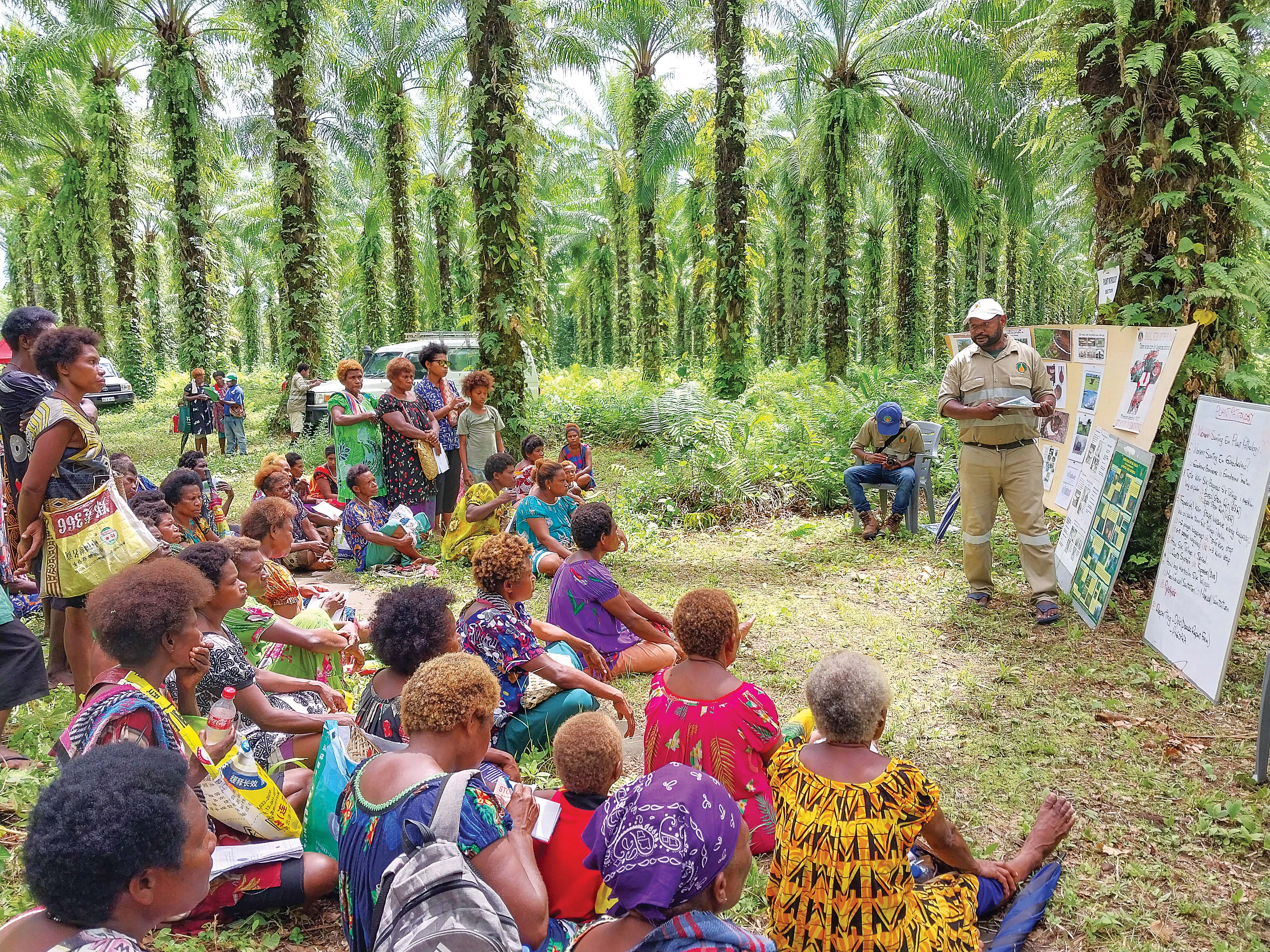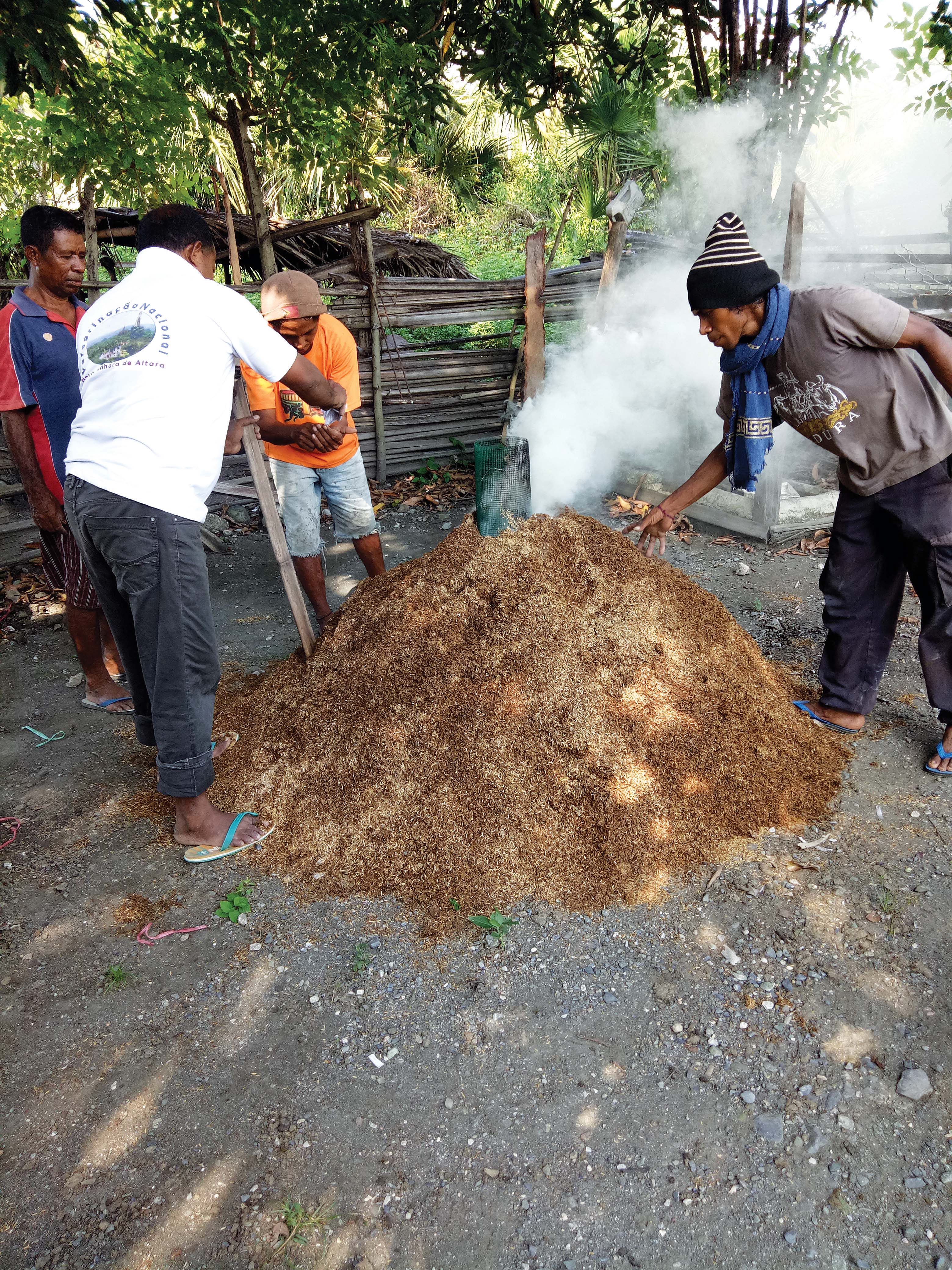Charcoal has been an essential tool for millennia. Made from plant waste that is burned under low oxygen conditions, we cook and heat with it, use it in cosmetics, in medicine and metallurgy, and in horticulture, where it is known as ‘biochar’.
Made mostly of carbon, biochar also contains valuable traces of nitrogen, potassium, zinc and phosphorous, all of which help to improve the physical, chemical and biological characteristics of soils.
During the charring process, called ‘pyrolysis’, pores develop and these provide habitats for important soil microbes and fungi and increase the soil’s water-holding capacity.
As a country with inherently poor soils, Timor-Leste is in urgent need of all the benefits that biochar offers, as it transitions from ‘slash-and-burn’ agriculture to permanent farm production.
Slash-and-burn clearing of rainforest to grow crops for 2 to 4 years before moving on essentially mines the soil of nutrients and results in low crop yields.
ACIAR Timor-Leste Country Manager, Mr Luis Almeida said the combination of low production with a rapidly growing population has led Timor-Leste to import 60–80% of its food.
‘As a result, increasing on-farm production and on-farm income have become key national policies for the Timor-Leste Government,’ said Mr Almeida.
And biochar has the potential to do both, exemplifying the circular economy by creating new value and enhanced productivity from waste streams.
In a previous role, Mr Almeida was part of the ACIAR-supported project investigating agricultural innovations for small farms, including biochar’s effect on soil productivity, on a wide range of crops and soils.
He said the success of the original research led to a follow-on project now underway. This has been designed to better understand the country’s soils, to identify the extent of potential for biochar production and to share the learnings of the initial project.
The amount of biomass available for conversion to biochar – in a sustainable manner – will provide a natural limit on the area that can be improved by biochar, with future use expected to focus on high-value and high-nutrition crops such as vegetables, fruits and pulses.





